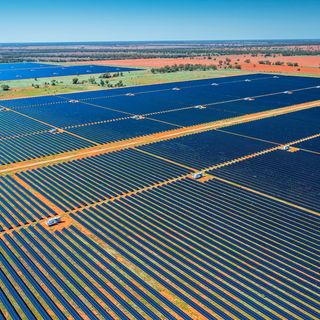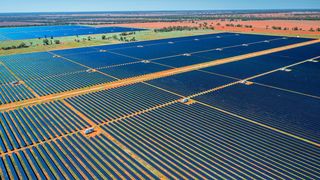The first part of the Australian government’s Future Made in Australia legislation passed through the Senate last month, setting up a national interest framework. But the legislation divided Parliament.
On one side, Labor argued the policy will help Australia build resilience to the sorts of supply chain disruptions we saw during COVID-19 and invest in local communities and jobs. On the other side, the Coalition argued the policy amounts to the government “picking winners” and “corporate welfare”.
Singled-out is the Australian government’s $1 billion commitment to subsidising the manufacturing of solar panels.
The government is pitching the program as building economic resilience, arguing that Australia is too reliant on imports from one country: China. In 2023, a whopping 96 per cent of Australia’s solar panel imports came from China. Others argue that China makes good quality solar panels cheaply – making solar energy a cost-effective solution to the energy transition. Rather than subsidise domestic industry, why shouldn’t we buy directly from China?
But this isn’t a policy challenge with an either-or solution – Australia should do both, subsidise and diversify. In the shifting and ever-growing solar industry Australia should balance domestic investments while diversifying its solar panel imports.
The solar supply chain is long and complicated. It involves turning silicon metal into extremely pure silicon (called polysilicon) to make wafers then converting those wafers into solar cells which are assembled into solar modules (panels). Different companies and factories (primarily in China but also in Southeast Asia, India, Europe and the United States) produce the various components.
If Australia is worried about solar panel imports it needs to be worried about the entire supply chain because China dominates each part of the production process. It produces more than 90 per cent of the world’s polysilicon, 96 per cent of wafers and over 85 per cent of solar modules.
This concentration can have consequences. In 2020, the price of polysilicon tripled due to disruptions at several Chinese factories. More disruptive scenarios – like a trade war or geopolitical conflict – could cause extended supply chain delays that would threaten the energy transition. Australia’s electrical grid needs to install millions of solar panels every year to reach net zero and replace ageing coal-fired power plants. On top of this, Australia sees its vast renewable energy resources as an economic opportunity – to export to other countries or produce green hydrogen and metals.
Green industrial policy is on the rise around the world. The United States first placed tariffs on imports of Chinese panels in 2011, increasing them in 2018 and again in 2024. As a result, China’s market share in the United States shrunk from 47 per cent in 2011 to almost nothing today. India, Brazil and Turkey have also placed tariffs on Chinese solar panel imports.
Other countries are subsidising domestic manufacturing of solar panels. The US Inflation Reduction Act (IRA) is the largest example. It offers tax credits to solar manufacturers and developers who use US-made panels. The European Union has also set a goal to manufacture up to 40 per cent of its solar panels. India is offering subsidies.
But these protectionist policies can come with downsides. Solar panels in the US can cost double those in Australia or Europe. Industrial policy requires taxpayers to foot the bill and doesn’t guarantee results. Even the IRA has struggled to attract investments in wafer and cell manufacturing.
So, any policy aiming to improve supply chain resilience must tackle the entire supply chain. There is little point in having a domestic factory that can produce solar modules if the module’s cells are still imported from a single source. Onshoring an entire supply chain – from polysilicon to panels – could be hard and expensive. And, it costs a lot more to manufacture panels in Australia than in other countries.
To balance these risks Australia’s Solar Sunshot program needs an outward-looking focus.
Supply chain resilience must form the core of any investments the Sunshot program makes. Subsidising a panel manufacturer that primarily sources cells from one country may not achieve the policy’s main goal of spreading risk. Australia should assess whether it can better target its investments to certain segments on the supply chain and strengthen overall global supply chain resilience.
Alongside, Australia should try to diversify its imports. Other countries – India, the US, Southeast Asia – are pouring money into solar manufacturing. And Australia has programs through Austrade and Export Finance Australia that can help forge links between Australian consumer and businesses overseas. To help, public investments made in solar energy through programs like the Capacity Investment Scheme should incorporate supply chain resilience in their assessment criteria.
The Sunshot policy has a good goal but Australia may lack comparative advantage in some segments of the solar supply chain. Australia needs to design its economic resilience policies in the most effective way, and that means making more targeted investments and being willing to look to more countries overseas – not just China.
Should Australia make solar panels? Supply chain security through global engagement







